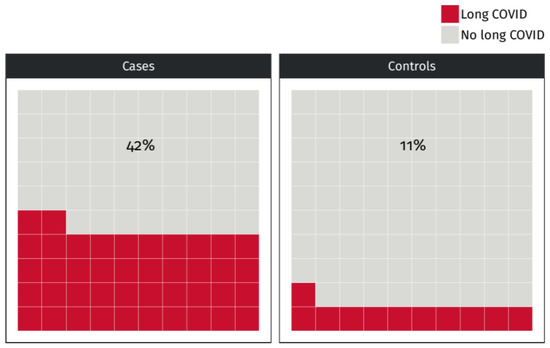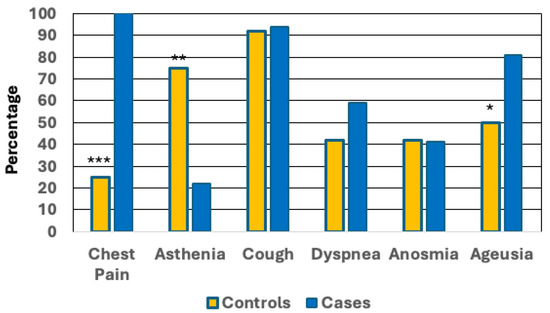Evaluation of Long-COVID Syndrome in a Cohort of Patients with Endometriosis or Adenomyosis
Anjeza Xholli, Isabella Perugi, Francesca Cremonini, Ambrogio Pietro Londero, Angelo Cagnacci
Background:
Long-COVID is characterized by the persistency of COVID-19 symptoms beyond 12 weeks, and it is probably consequent to immune dysregulation induced by SARS-CoV-2 infection. Immune dysregulation is associated with and probably involved in the pathogenesis of chronic gynecological conditions like endometriosis and adenomyosis. This study evaluated whether the presence of endometriosis or adenomyosis increases the risk of long-COVID, i.e., the persistence of COVID-19 symptoms beyond 12 weeks since infection.
Methods:
This retrospective observational study was performed at the outpatient service for endometriosis and chronic pelvic pain, at a university hospital. The diagnosis of endometriosis/adenomyosis was primarily based on clinical symptoms and ultrasonography assessment. Data regarding infection, vaccination, symptoms associated with SARS-CoV-2 infection, and their persistence for a minimum of 12 weeks were collected.
Results:
This study included 247 women, 149 controls without and 98 cases with endometriosis/adenomyosis. Among these, 194 (116 controls and 78 cases) had suffered from SARS-CoV-2 infection. Rates of infection and vaccination were similar in the two groups. The distribution of the SARS-CoV-2 vaccine was uniform across the two cohorts. COVID-19 patients with endometriosis or adenomyosis exhibited a higher prevalence (p < 0.001) of dyspnea and chest pain. The prevalence of long-COVID beyond 12 weeks was higher in cases than controls (42% vs. 12%; p < 0.001) with chest pain (p < 0.001) and ageusia (p < 0.05), forming the most representative symptoms.
Conclusions:
Symptoms of long-COVID are more frequent in women with than without endometriosis/adenomyosis.
Link | PDF (Journal of Clinical Medicine) [Open Access]
Anjeza Xholli, Isabella Perugi, Francesca Cremonini, Ambrogio Pietro Londero, Angelo Cagnacci
Background:
Long-COVID is characterized by the persistency of COVID-19 symptoms beyond 12 weeks, and it is probably consequent to immune dysregulation induced by SARS-CoV-2 infection. Immune dysregulation is associated with and probably involved in the pathogenesis of chronic gynecological conditions like endometriosis and adenomyosis. This study evaluated whether the presence of endometriosis or adenomyosis increases the risk of long-COVID, i.e., the persistence of COVID-19 symptoms beyond 12 weeks since infection.
Methods:
This retrospective observational study was performed at the outpatient service for endometriosis and chronic pelvic pain, at a university hospital. The diagnosis of endometriosis/adenomyosis was primarily based on clinical symptoms and ultrasonography assessment. Data regarding infection, vaccination, symptoms associated with SARS-CoV-2 infection, and their persistence for a minimum of 12 weeks were collected.
Results:
This study included 247 women, 149 controls without and 98 cases with endometriosis/adenomyosis. Among these, 194 (116 controls and 78 cases) had suffered from SARS-CoV-2 infection. Rates of infection and vaccination were similar in the two groups. The distribution of the SARS-CoV-2 vaccine was uniform across the two cohorts. COVID-19 patients with endometriosis or adenomyosis exhibited a higher prevalence (p < 0.001) of dyspnea and chest pain. The prevalence of long-COVID beyond 12 weeks was higher in cases than controls (42% vs. 12%; p < 0.001) with chest pain (p < 0.001) and ageusia (p < 0.05), forming the most representative symptoms.
Conclusions:
Symptoms of long-COVID are more frequent in women with than without endometriosis/adenomyosis.
Link | PDF (Journal of Clinical Medicine) [Open Access]


